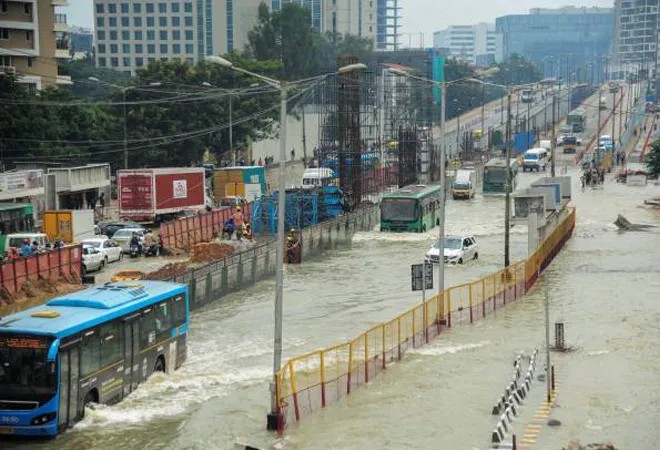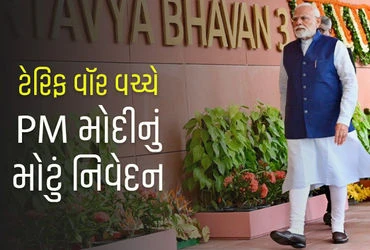Urban flooding, in simple terms, occurs when city drainage systems are overwhelmed by intense rainfall, leading to waterlogging in streets, homes, and public areas. In India, this problem has worsened significantly over the past two decades. According to the Ministry of Home Affairs, urban flooding incidents have increased sixfold between 2000 and 2020. The National Disaster Management Authority (NDMA) reports that over 80% of Indian cities have faced urban flooding in the last decade. A study by the Centre for Science and Environment (CSE) shows a staggering 200% rise in such events between 2000 and 2023. Recent examples highlight the gravity of the situation, Bengaluru in 2022 saw just one hour of rain flood tech parks and cause losses of over ₹225 crore. In 2023, the Yamuna River in Delhi crossed danger levels, flooding streets, causing power outages, and paralyzing traffic. Mumbai faced major disruptions during monsoons in both 2021 and 2023 despite ongoing flood mitigation efforts. Chennai has suffered repeated flooding in 2015, 2021, and 2023, with damages exceeding ₹20,000 crore since 2015.
The causes of this increasing flood risk are multifaceted. One major factor is unplanned urban growth. Over 35% of India’s population now lives in urban areas, projected to rise to 50% by 2047. Much of this growth is haphazard, with rampant construction over natural water bodies and wetlands. For example, Bengaluru has lost 79% of its water bodies over four decades, and Chennai has lost about 65% of its wetlands since the 1990s. Secondly, most Indian cities rely on outdated drainage infrastructure, some dating back to colonial times. These systems were not built to manage the volume of rainfall and surface runoff typical of today’s concretized cities. A report by the Comptroller and Auditor General (CAG) noted that only 11 out of 100 smart cities had completed stormwater drain upgrades. Climate change is also intensifying the problem. The Indian Meteorological Department (IMD) has recorded a 33% rise in extreme rainfall events since 2005, and the IPCC warns that such events may rise by another 20,30% by 2050.
The economic cost of urban flooding is enormous. A 2020 World Bank report estimated annual losses from urban floods in India at over $7 billion. From 2018 to 2023, the country incurred ₹3.6 lakh crore in direct losses from climate-related disasters, with floods being the leading cause. The Reserve Bank of India’s 2023 Climate Risk Assessment found that cities frequently affected by flooding could lose 4.5% of their GDP annually if climate risks go unmanaged. Beyond financial losses, the impacts include business shutdowns, especially in IT hubs like Bengaluru, a rise in diseases such as dengue, cholera, and typhoid, infrastructure damage, increased insurance costs, and disruption to education and livelihoods, particularly affecting low-income families.
Looking ahead, the risks are expected to grow. A joint study by NITI Aayog and WRI India predicts that by 2050, over 65 Indian cities will face major flood risks annually. Economic damages from urban flooding are expected to triple, particularly in cities lacking comprehensive flood management plans. Cities like Mumbai, Kolkata, Surat, Chennai, and Guwahati, with dense populations and fragile infrastructure, are among the most vulnerable.
To address this growing crisis, India must adopt smart and inclusive solutions. Upgrading drainage infrastructure is crucial, including expanding drains, building underground water storage, and mandating rainwater harvesting in large buildings. Restoring natural ecosystems is equally important, reclaiming lakes, wetlands, and floodplains, reviving urban rivers, and legally preventing construction in vulnerable areas. Technology can also play a key role through real-time flood monitoring, GIS mapping, AI-based flood prediction, and citizen alert systems. Cities can adopt the ‘Sponge City’ model, like in China, which emphasizes green roofs, parks, rain gardens, permeable pavements, and urban wetlands. Community participation is vital, local volunteers and resident welfare associations can be trained in flood preparedness and community rainwater harvesting. Finally, financial tools like green municipal bonds, urban resilience funds, and climate insurance can support both mitigation and recovery.
In conclusion, urban flooding is not just a seasonal inconvenience, but a slow-moving national emergency. Its toll in financial, physical, and emotional terms is mounting every year. However, India’s cities can become resilient through science-based planning, strong governance, and active citizen engagement. Climate change is a global challenge, but resilience starts at the local level. If we act together, and act now, our cities can be not only habitable but truly flood-resilient.
0 thoughts on “Sink or Swim: Why Indian Cities Must Act Now on Urban Flooding”
Leave a Reply
Your email address will not be published. Required fields are marked *
RECENT NEWS
- Jackie Shroff's daughter Krishna Shroff passed away in two days.
- Karnataka rain: Moderate rainfall expected in Bengaluru on August 7 after overnight rains
- Supreme Court dismisses plea challenging legality of probe process in cash scam case
- Cash-at-home row: SC rejects Justice Yashwant Varma's plea; judge had challenged in-house inquiry
- 'Ready to pay a heavy price to protect farmers...' PM Modi's big statement in the midst of tariff war



















